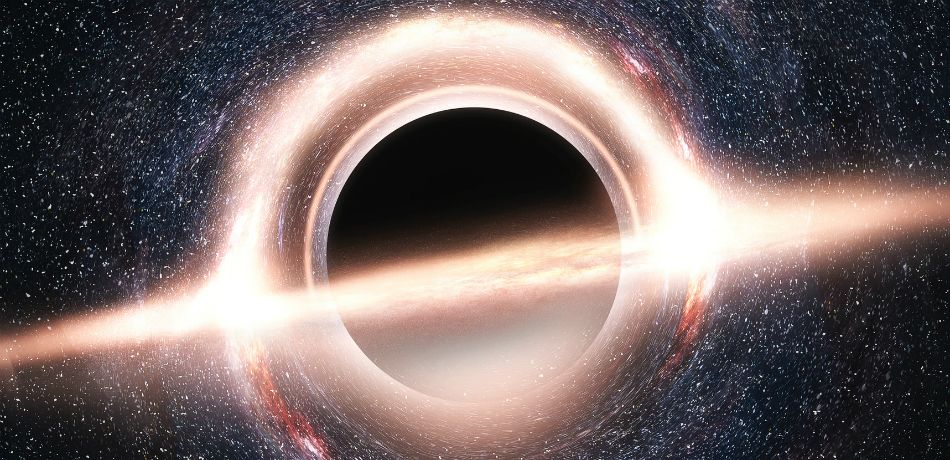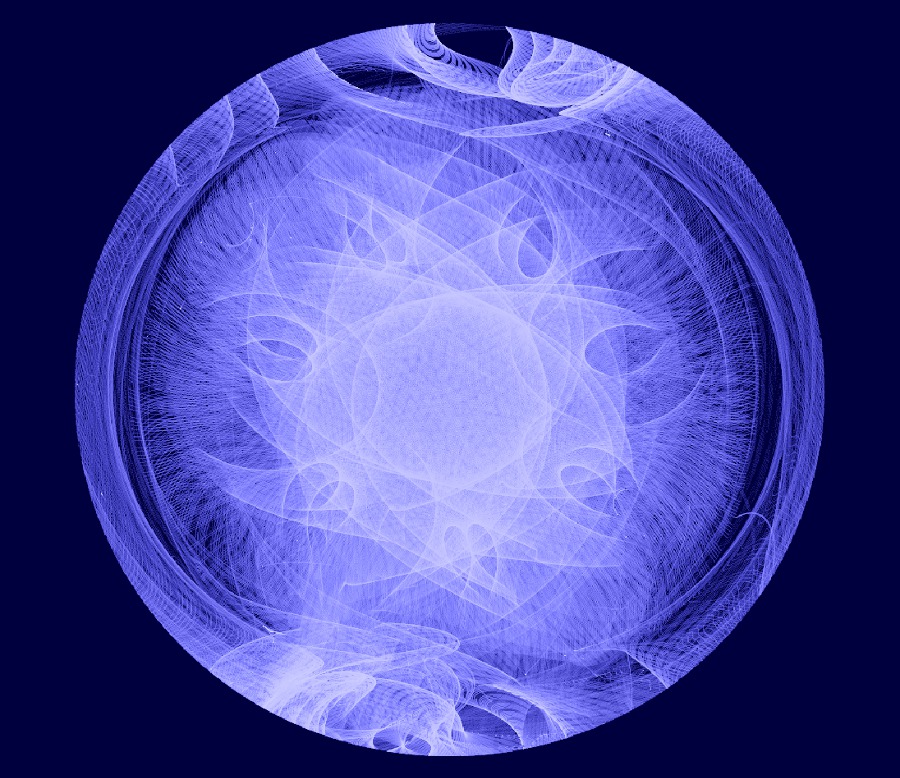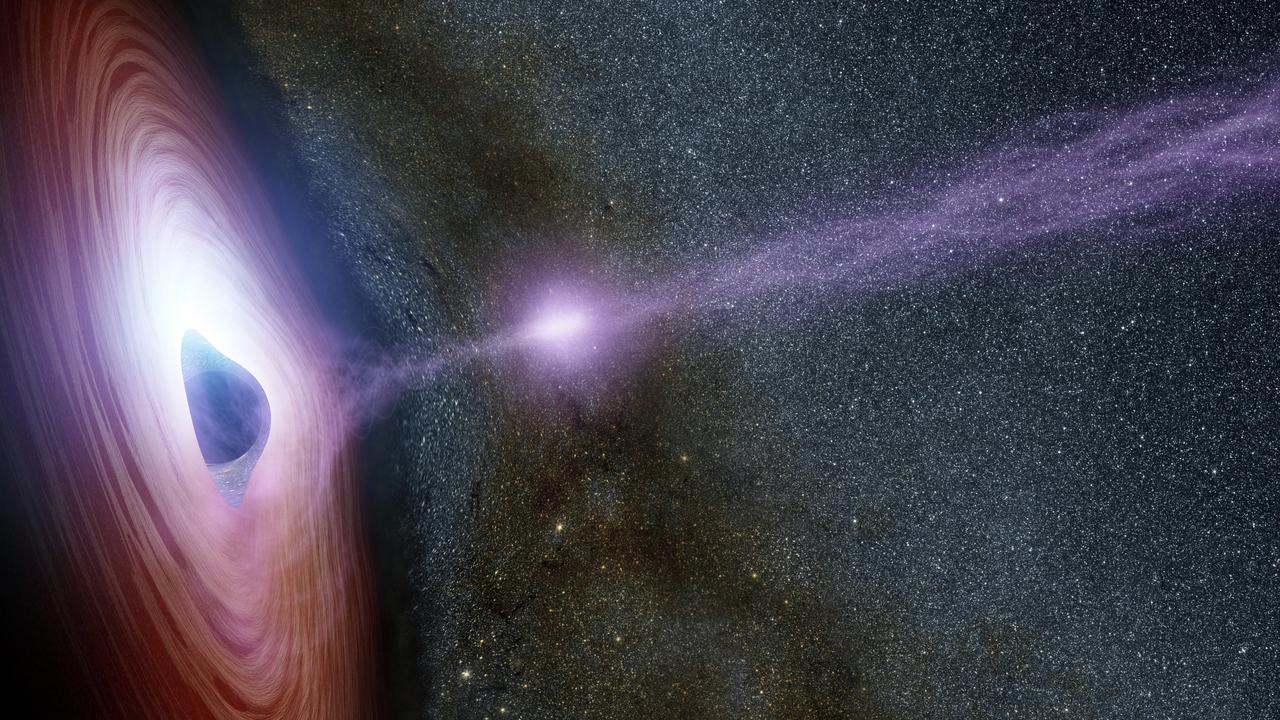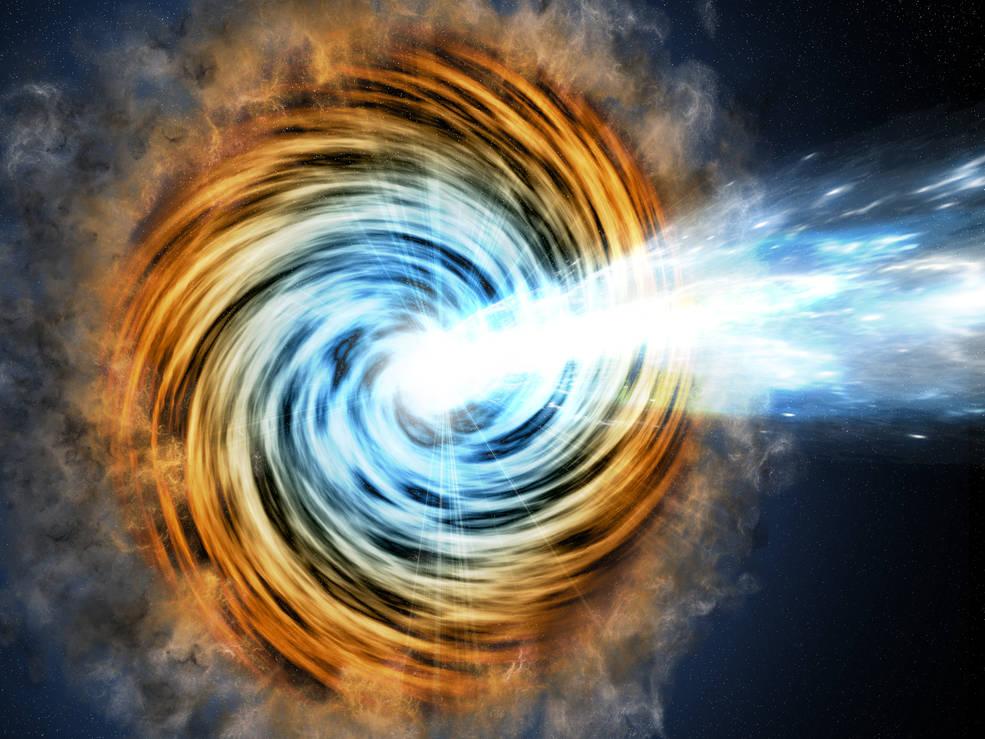BLACK HOLES
NEUTRON STARS
REVERBERATION MAPPING
X-RAY BURSTS
QPOs

Black Holes
Black holes are the most extraordinary prediction of Einstein’s Theory of Relativity. When a star that is too massive to form a neutron star dies, it simply collapses to nothing, leaving only its gravitational field behind. The gravitational field is so strong that the material of the star is actually cut off from the rest of the Universe by a surface of no return, the event horizon. The gravitational field that remains is absolutely simple.
Everything about it can be described by an equation that depends on just the mass and spin of whatever remains beyond the horizon. All of the other details of the original dying star do not matter. These two numbers tell us all that everything about the black hole itself, and Einstein’s theories make precise predictions about how material and light will travel near the black hole. Colibrì will test those predictions with unrivalled accuracy.
See also:
- Reverberation mapping
- QPOs

Neutron Stars
Neutron stars are amongst the most curious and fascinating objects in the Universe. They form when a massive star (about ten times the mass of our Sun and up) reaches the end of its life and has no more fuel to burn. Most of the star’s mass is ejected in the spectacular event called a supernova, but something is left over at the center of the explosion, of what was before the core of the star: a newly born neutron star.
After over 50 years from their discovery (the first pulsar was discovered in 1967), neutron stars still elude our full understanding, as we still don’t know what they are made of. Still, in the past 50 years, we have learned a lot about them. For example, we have measured the masses of many of them and we have a good guess on what their average radius is. These measurement places them on the 2nd place for the most compact object in the Universe, surpassed only by black holes: they have a mass that is a bit more than our Sun’s, but the radius of a small city (about 10 km). This means that on average if you take a sugar cube of a neutron star, it weighs as much as Mount Everest!
Such compactness translates into an extreme density: the core of a neutron star is denser than an atomic nucleus. Under unbelievable pressure, nuclei in the inner crust of neutron stars merge into the core, forming a plasma of neutrons, protons, and electrons. Deeper inside the core, theory predicts new kinds of particles to mix with the neutron-proton-electron plasma, which have only been seen in highly energetic heavy-ions collisions: hyperons. Deeper still, there is the possibility of a phase transition into a completely different state of matter: particles like neutron, protons, and hyperons would disintegrate into their fundamental components, free quarks, forming what is called a quark-gluon plasma.

Artist's rendition of a neutron star hovering over Manhattan
All of this falls well into the realm of theory, as there is no other place in the Universe where we can experiment with such high densities. For this reasons, neutron stars are the only laboratories available to study the physics of matter at extremely high densities, and until we can send a probe directly to a neutron star, the only way we have to study these fascinating objects is by building new and more sensitive telescopes.
Compactness is not the only remarkable characteristic of neutron stars. The strongest magnetic fields in the Universe are also found in neutron stars, and in particular on the surface of magnetars, the most highly magnetized neutron stars, with magnetic fields of billion times higher than any magnet on Earth. Also, neutron stars spin incredibly fast, with the fastest neutron star ever discovered rotating at a whopping 700 times a second.
Many neutron stars emit in the X-rays, either because they are young and hot and/or active, or because they are being fed hot material by a companion star (in what is called a binary system). In both cases, Colibrì will be able to probe the X-ray emission from neutron stars and unveil their mysteries.

Artist's rendition of an accretion disk around a neutron star
Reverberation mapping
Black holes and neutron stars can accrete matter thanks to the presence of a geometrically thin, optically thick accretion disks. As matter falls into the potential well of the central object, it heats up and therefore the disk glows and emits thermally in the soft X-rays. Studying the direct emission from the disk can tell us a lot about the system, e.g. the temperature of the disk or the internal truncation radius (see also QPOs).
There is another form of X-ray emission that carries information about the physics of the system: reverberation. In both neutron stars and black holes, X-ray emission from outside the disk (coming from the neutron star’s surface or from a glowing corona above the black hole) can be reflected by the disk into our line of sight. By correlating the primary emission with the reflected one we can map the accretion disk: as more distant regions of the accretion disk will be illuminated in subsequent times, photons of different energy will present different time delays.
Accreting black holes are thought to have a compact, optically thin corona right above the black hole, which produces a power-law emission in the hard X-rays. Some of the photons emitted by the corona are reflected back into the line of sight by the disk, generating the reverberation signal. For neutron stars, the emission comes from the surface of the star itself. Accretion onto neutron stars causes repeating thermonuclear reactions that are observed as bright bursts of X-ray emission (Type I X-ray bursts) and that are caused by unstable hydrogen and helium burning. Intermediate bursts and superbursts are rarer and are thought to be produced by thermonuclear flashes in deep layers of helium and carbon respectively. Of much shorter duration and different origin are the so-called Type II X-ray bursts, which are thought to be caused by instabilities in the accretion flow. Similar to the coronal emission for black holes, the X-ray-burst emission from the neutron star surface can be reflected by the accretion disk surrounding the neutron star, and indeed reflection spectra have been observed for neutron stars as well.
The reflection emission presents peculiar features in its spectrum, that includes an iron line at 6.4 keV, formed via fluorescence, and a reflection “bump” that peaks at about 30 keV, formed via inelastic scattering from free electrons. Gravitational redshifts from the central object and relativistic motion of the orbiting plasma in the inner disk distort the spectrum, providing insight on the dynamics of the accretion disk. The rapid variability of the principal emission (coronal emission for black holes and surface emission for neutron stars) can provide a way to map the inner regions of the accretion disk as fluctuations in the continuum emission are reflected in the reverberation spectrum with a light-crossing time delay. Time delays can be of the order of a few hundreds of microseconds. Also, as different parts of the accretion disk will be illuminated in subsequent times, photons of different energy will present different time delays, reflecting the characteristic Doppler shift of the reflection region.
Observations up to date are limited by either the low energy resolution or low timing resolution of current X-ray telescopes. Reverberation lags have only been detected for supermassive black holes, for which the timescales are of the order of milliseconds and not microseconds. The combination of high energy- and high time-resolution of Colibrì will allow detecting these lags in the reverberation spectrum of stellar mass black holes and neutron stars. High resolution spectral fitting of the X-ray emission, especially of the iron line profile, provides information on the strong-field gravity effects on the orbiting plasma and its dynamics, from which radii can be inferred in units of the gravitational radius, other than on the spin of the central object and on the inclination angle of the system. For black holes, the possibility of performing reverberation mapping, which yields distances in absolute units given by the light travel time, simultaneously to spectral fitting would therefore provide a test of the Kerr metric itself, as well as a measurement of the mass of the black hole.
Type I X-ray bursts
As neutron star accretes material from its companion, hydrogen and helium pile up on the surface of the neutron star. Eventually, this layer becomes so thick that nuclear reactions begin in the layer, heating the layer. The additional heat increases the nuclear reactions leading to a runaway thermonuclear explosion on the surface of the neutron star: a Type-I X-ray burst.
During the burst, emission from the surface dominates the X-rays from the system, so not only is the source extremely bright during the burst but also the radiation is a probe of the neutron star surface. If we can identify spectral lines in the emission during the burst, we can measure the gravitational redshift of the surface, a key prediction of general relativity. This will yield an estimate of the ratio of the mass to the radius of the neutron star. The exquisite energy resolution and sensitivity of Colibrì will allow us to identify even weak spectral lines.
Furthermore, very often these accreting neutron stars rotate rapidly, so a measurement of the width of the spectral lines can yield an estimate of the radius of the neutron star as well, giving unique constraints of the properties of the ultra-dense matter within neutron stars.

Quasi-periodic oscillations
The fastest variability components in X-ray binaries detected so far are kilohertz quasi-periodic oscillations in neutron star binaries (kHz QPOs). In general, variations in the X-ray spectra that happen on an almost periodical basis have been detected both for neutron stars and black holes.
For black holes, they are detected in different frequency ranges and are divided into low-frequency QPOs, roughly between 0.1-30 Hz, and high-frequency QPOs, detected in the range of 40 to 450 Hz.
High-frequency QPOs have been observed in accreting black holes since the late 1990s. Their frequencies correspond to the orbital frequencies of matter close to the innermost stable circular orbit of the accretion disk of a black hole of about 10 solar masses, and they do not vary significantly in response to changes in the luminosity. Low-frequency QPOs are normally detected with high significance, thanks to their high amplitudes, and their origin is thought to be either in some instability in the accretion flow or in a geometric oscillation. Neutron stars QPOs (also called kHz QPOs) usually appear as a double peak in the power spectrum of the X-ray emission and the two peaks are observed to shift in frequency together in the 300-1200 Hz range, and their changes are correlated with the source state and often with luminosity. Similar to high frequency QPOs for black holes, the higher-frequency peak of the neutron star kHz QPOs appears to be at frequencies comparable to the orbital motion close to the innermost radius of the accretion disk; the origin of the lower-frequency peak is still poorly understood, but it is thought to be somehow related to the spin frequency of the star.
The mechanism responsible for QPOs, or even if neutron stars’ and black holes’ QPOs are related, is still debated, but a careful study of their characteristics can lead to a better understanding of the physics of black-hole accretion and of general relativistic effects in the strong field regime.
Taking the pulse of neutron stars and black holes

© Her Majesty the Queen in Right of Canada (2019)
Image credit slider: neutron stars NASA/DOE/Fermi, black holes NASA, reverberation NASA/JPL-Caltech, lines NASA/Goddard, AGNs NASA/JPL
Image credit sections: black holes NASA/Goddard, neutron stars NASA/Goddard, reverberation NASA/ESA/Tr’Ehnl,X-ray bursts NASA, QPOs ESA/ATG medialab




